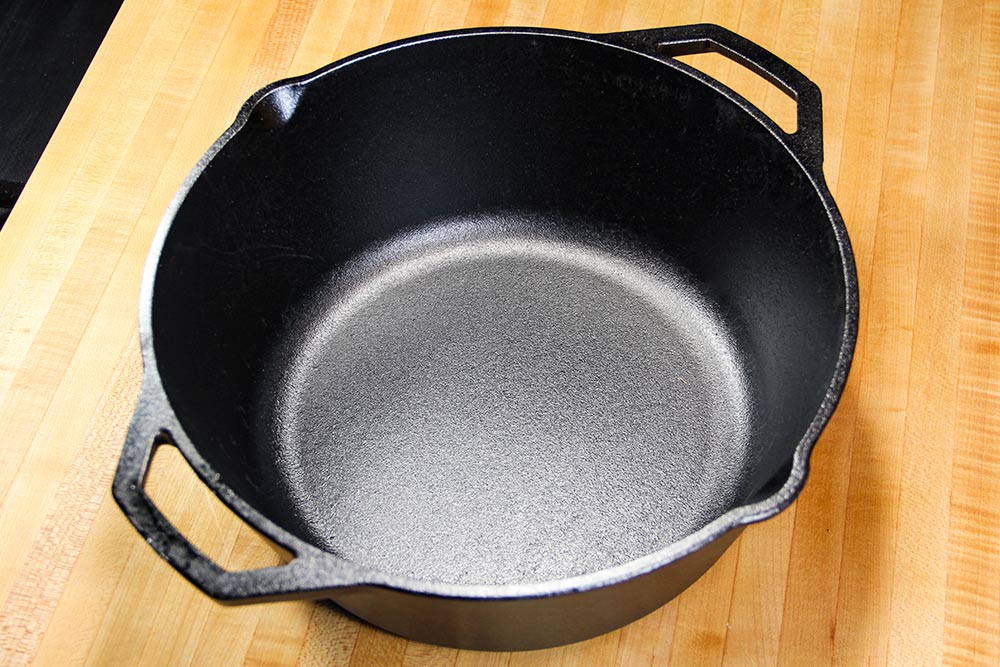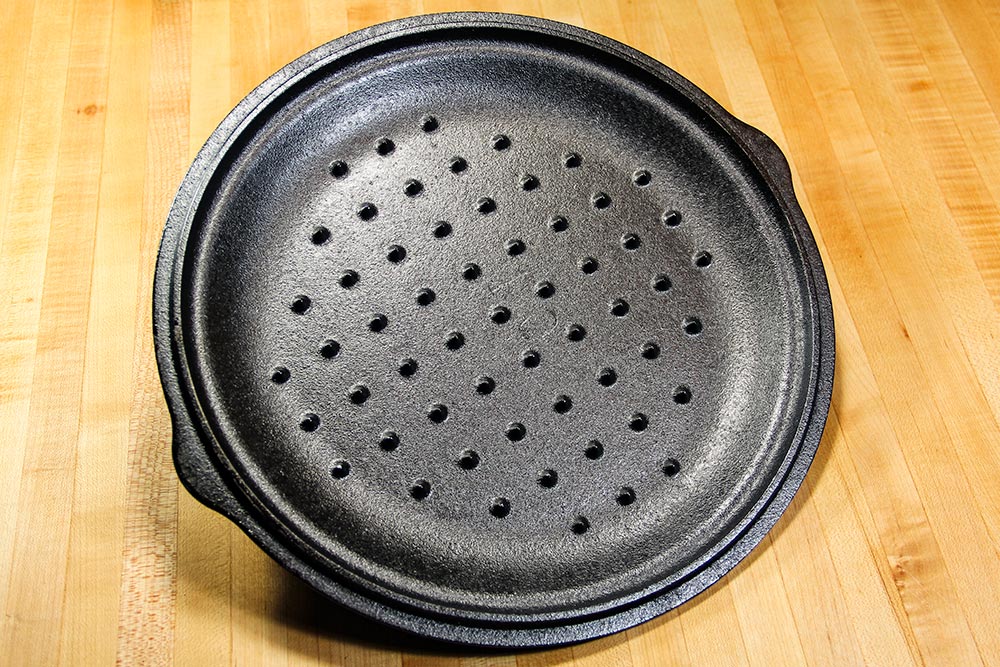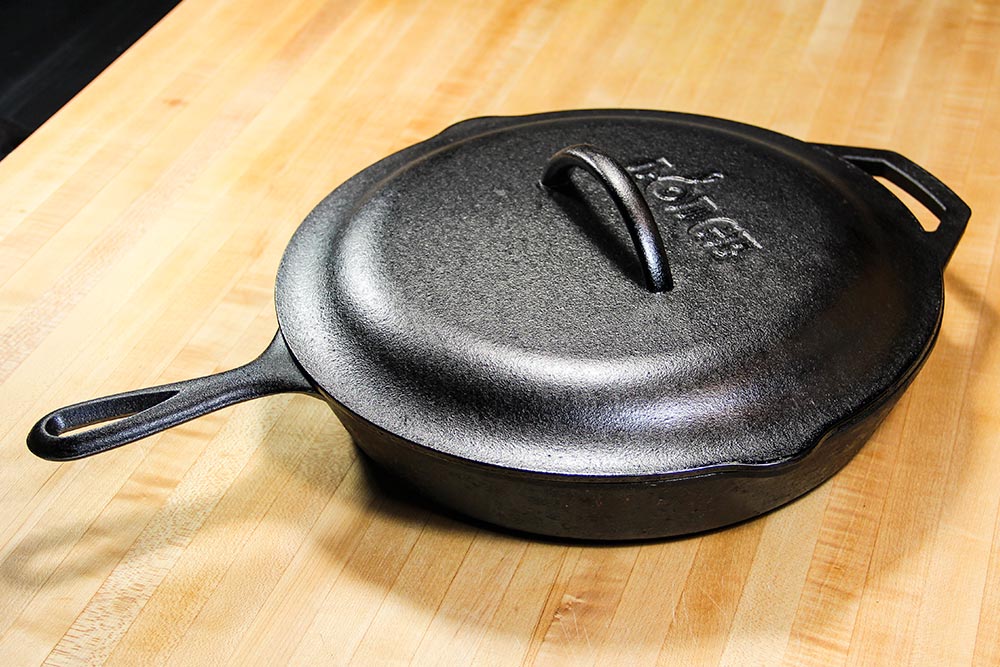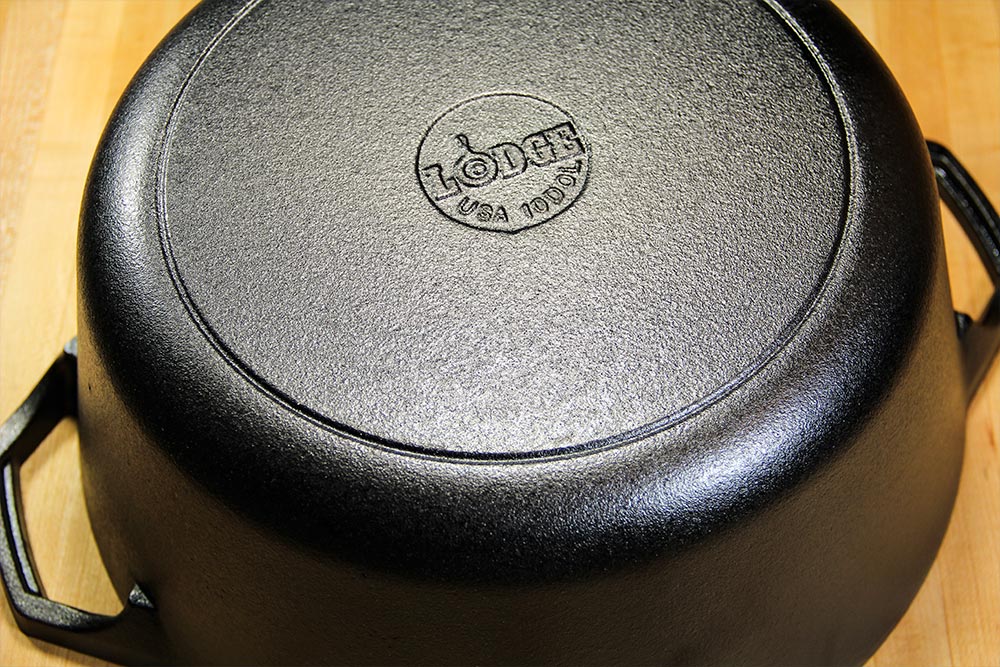I recently began the “Stewing & Braising” section of my online cooking classes over at “America’s Test Kitchen.” Before I began, I wasn’t sure if I was going to like this style of food preparation, but the more I learned, the more I realized that it’s actually a very economical and fun way to put food on the table. And even better than that, it appears that Laura and I live in the middle of what can be described at stewing and braising country. Here in Maine, long cold winters are very conducive to a nice, hot bowl of something delicious.
One of the pieces of equipment that’s called for when performing this type of cooking is a Dutch oven, which is basically another name for a really heavy pot. Back in the day, these were used all over the place to feed large families, but are still quite popular in many kitchens. They are versatile and can work wonders for those long, drawn out meal creations.
I never intended to purchase one of these things. I already have quite a few large pots that I thought I could get away with using. The thing is, the further my instructor traveled down the stewing and braising road, the faster I realized that I wasn’t going to enjoy the full benefit of a slow cooked meal if I didn’t follow her instructions. And the more I explored online, the more I learned of all the recipes I could prepare with such a tool. For instance, did you know that you could cook a loaf of bread in a Dutch oven? No? Well, neither did I. When I discovered this little tidbit of information, I had no choice but to delve into the depths of the internet to find my new piece of kitchen equipment.
It really was a toss-up between the Lodge “Enameled” Cast Iron Dutch Oven and the regular Lodge Cast Iron Dutch Oven. The enameled versions cost twice as much, but really look spectacular. It wasn’t until I remembered that I have yet to bring any of my pots to a fashion show that I settled on the regular cast iron.
There’s a small minority of folks out there who like to talk about how cast iron kitchen equipment may have the propensity to rust. I’ve even seen photographs that tell the same story. I’ve got my own story, though, which helped me decide real, raw cast iron was the way to go.
Here’s my story – About a year ago, I burned my last fried egg in a stainless steel skillet. I had been using stainless steel to prepare these types of eggs for years with varying luck. For some odd reason, one day my eggs wouldn’t stick a bit and another day, I found myself scraping their remnants off with a grinder out in the garage. To this day, I have no idea what I was doing wrong – or right. It can’t be simple pan temperature because I’ve focused on that element more times that I care to remember.
Anyway, the moment my face turned red for the last time, I hopped on the internet to search for the right skillet for the job. More often than not, I was led toward cast iron, which was strange because I had always heard that those non-stick pans work best to fry up eggs. Since I had endeavored through my share of non-stick pans as well, I decided to give the cast iron a shot. I haven’t look back since.
Since I received my 12″ cast iron skillet, I haven’t burned one single egg. I also haven’t had any stick to the pan. It’s like it’s magic. After a few breakfasts, I realized that I’m not as horrible of a cook as I thought I was – I was simply using the wrong equipment. Eggs aren’t meant to cook in stainless steel and those non-stick skillets wear out way too fast. Cast iron has been used for a very long time and there’s a reason it’s still around. It just works.
Regarding the rust – I have encountered it once in my pan. I accidentally left it sitting in the sink overnight with a bit of water puddled up inside. When I woke up, I realized what I had done and I quickly scrubbed the rust out with a sponge and everything went back to normal. Just to be sure, I rubbed some olive oil on the spot and honestly, I forgot all about it. As long as pots and pans made of this type of material are properly cared for, everything should be okay.
Let’s get down to business. The Dutch oven I received today is, again, manufactured by Lodge. Since I already have experience with this company and I’ve been happy, I thought I shouldn’t rock the boat. They’re also very fairly priced.
I purchased the 7 quart Dutch oven from Amazon for around $55. It weighs about 10 pounds (the web page says 17 pounds – could it really weigh that much?), but once you get used to lugging it around, it’s not that bad. I just finished up a photo shoot and I still have energy to spare. Speaking of photo shoots, please allow me to show off a bit below. I’ll offer some commentary below each photo.

The dimensions of the Dutch oven are 12 inches across and 4-3/4 inch deep, which is perfect, because the lid of this pot fits perfectly on my skillet. More on that below.

I took this photo because I wanted you to see how thick the walls are. Imagine the heat consistency of this thing. No more ups and down with temperature.

It was fun to watch folks try to figure out what these little bumps are on the underside of the lid. These are for “self-basting,” which means that as moisture evaporates and condenses on the inside of the lid, the droplets will find a bump and fall from that, back onto the food, instead of running down the inside of the walls. This is handy and helps keep food from drying out.

As I mentioned above, the lid that came with the Dutch oven also fits on my cast iron skillet. I can’t tell you how much I like this fact.

Believe it or not, as I was looking at this brand of Dutch oven, I wasn’t able to find one picture of the bottom of it. It was important for me to see it because I wanted to know if it was flat, as opposed to inset like so many others, because of our glass top stove. If the bottom was inset, we wouldn’t be able to use the pot. Since it’s flat, we can use it both to brown food on the stove top as well as to simmer on the wood stove.
——
If you’ve enjoyed today’s post and found it helpful, please share it with a friend. Also, if you’d like to continue reading and would like our posts sent directly to your email inbox, simply sign up for our newsletter. We’ll send each and every post directly to you. Thanks!
Leave a Reply